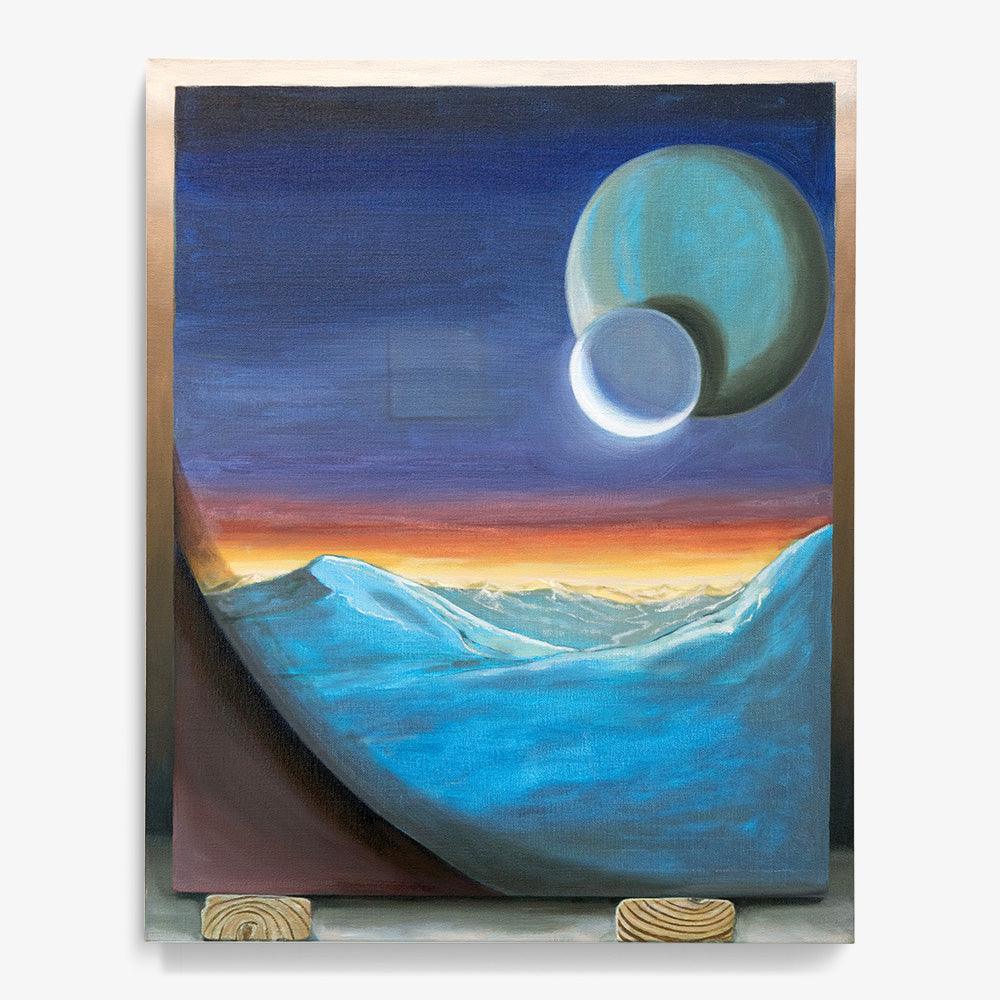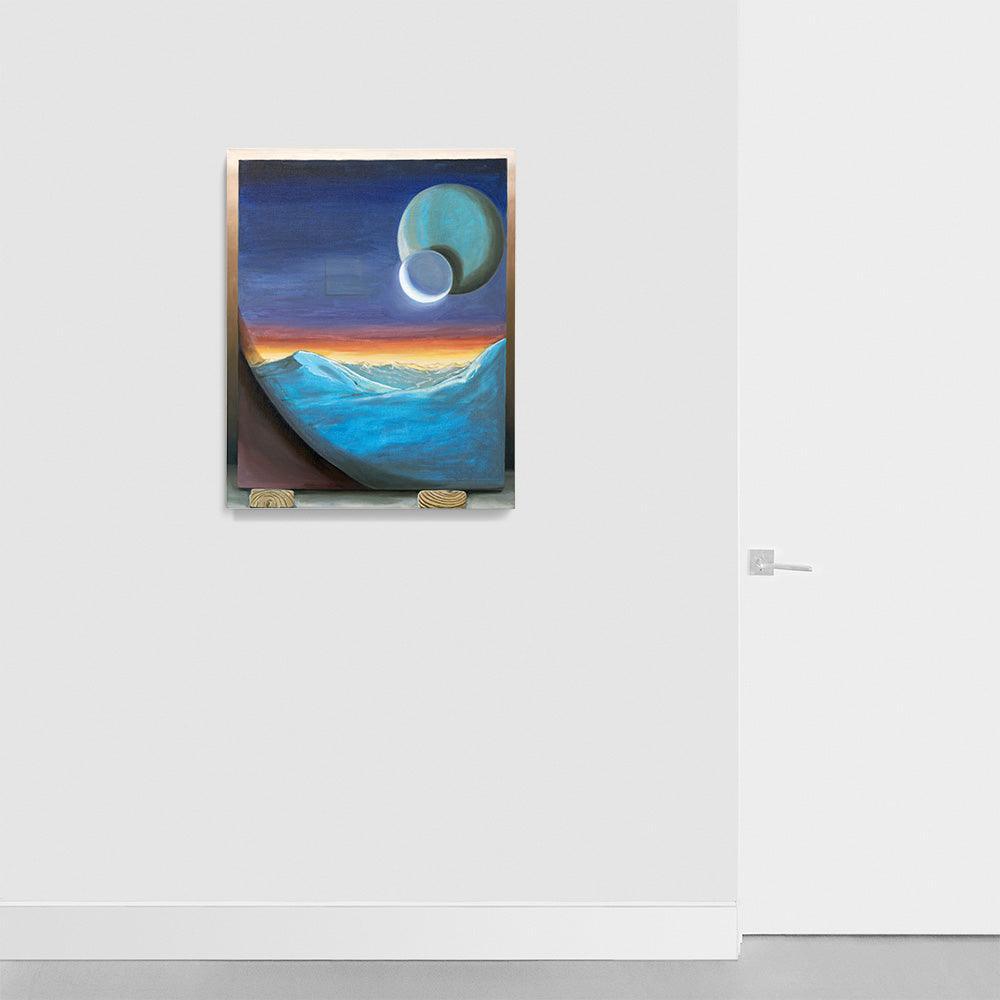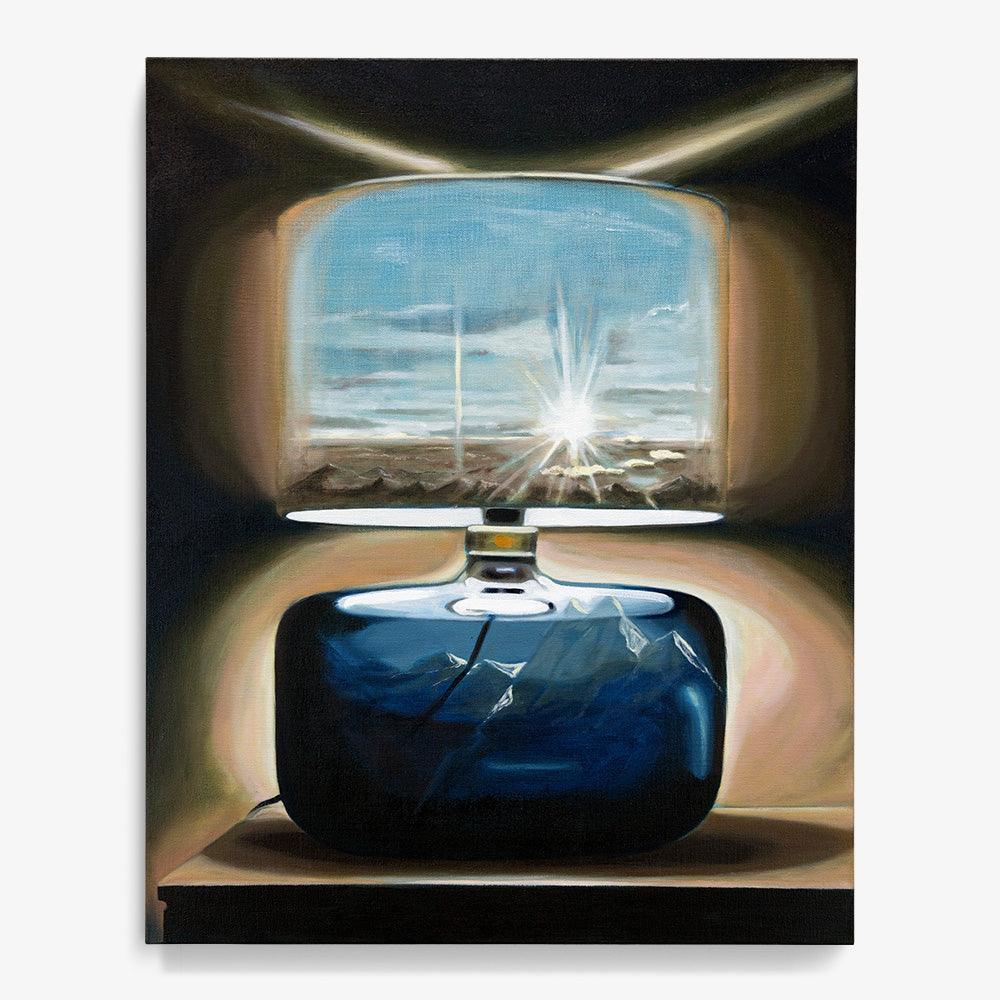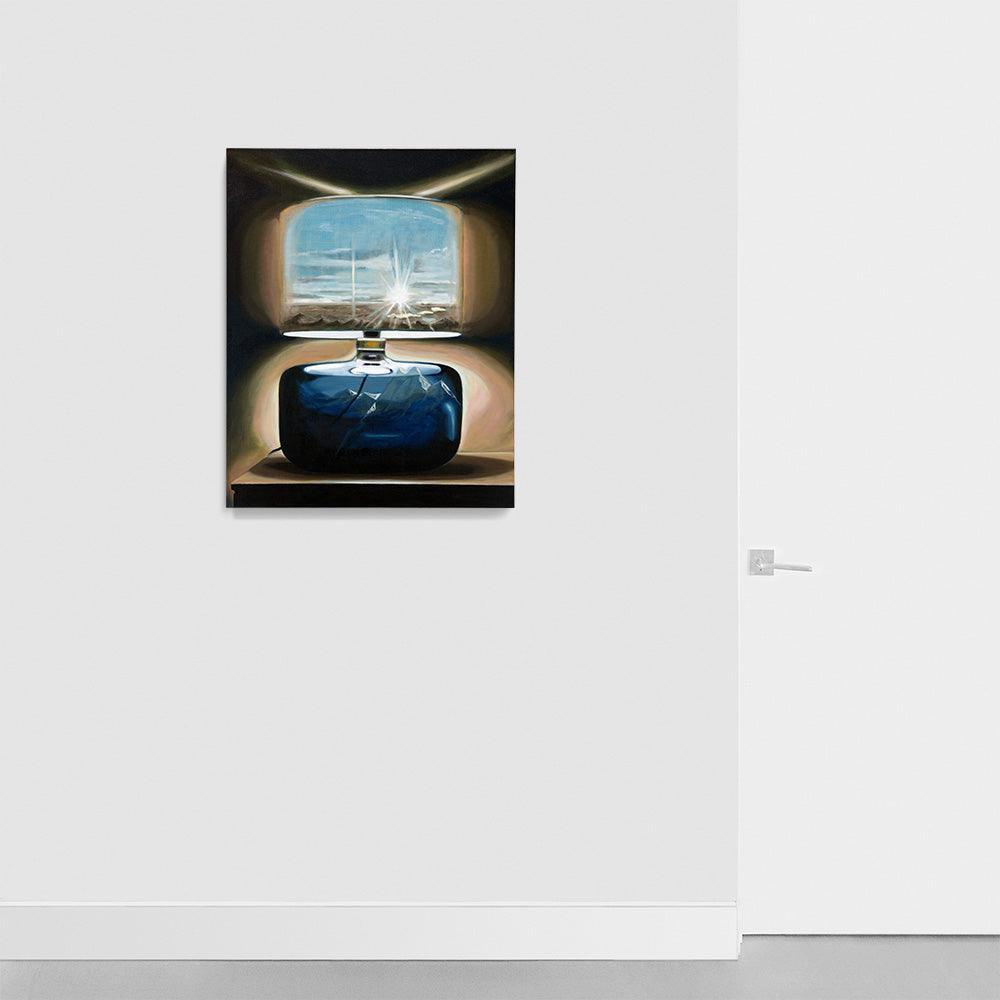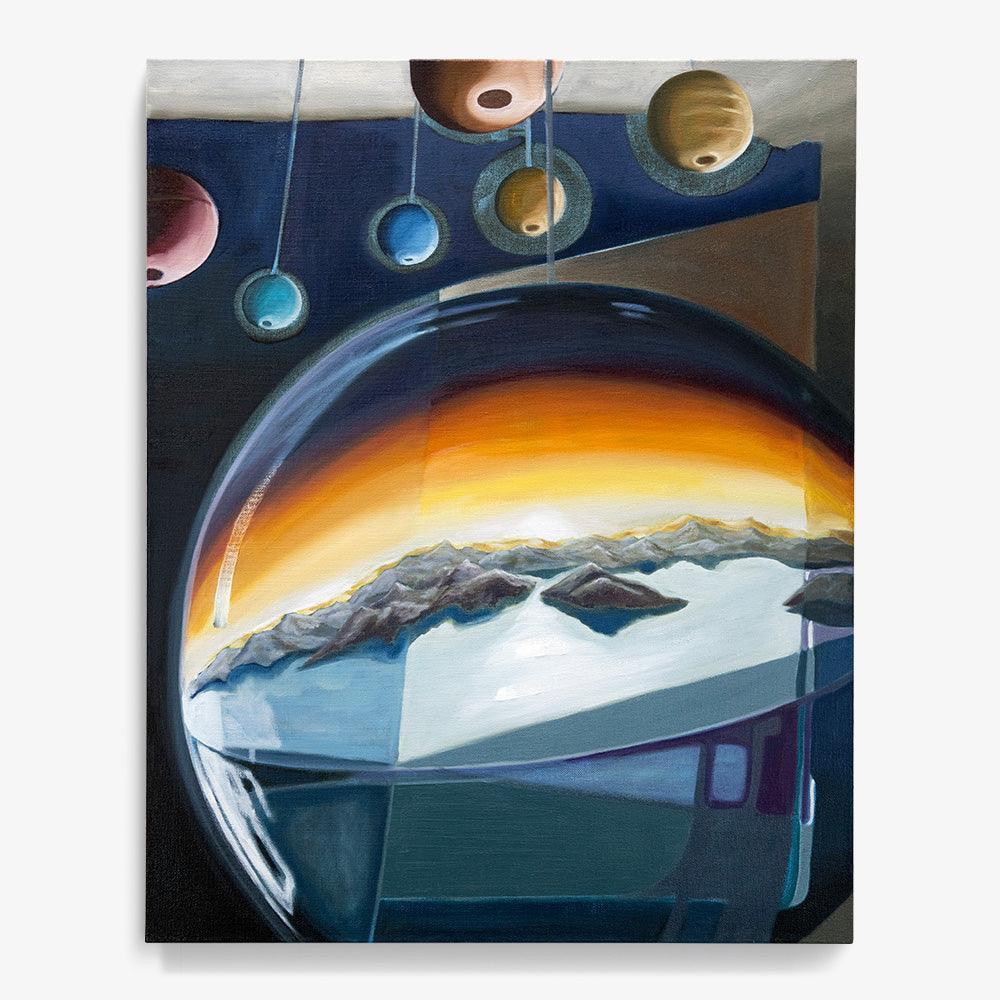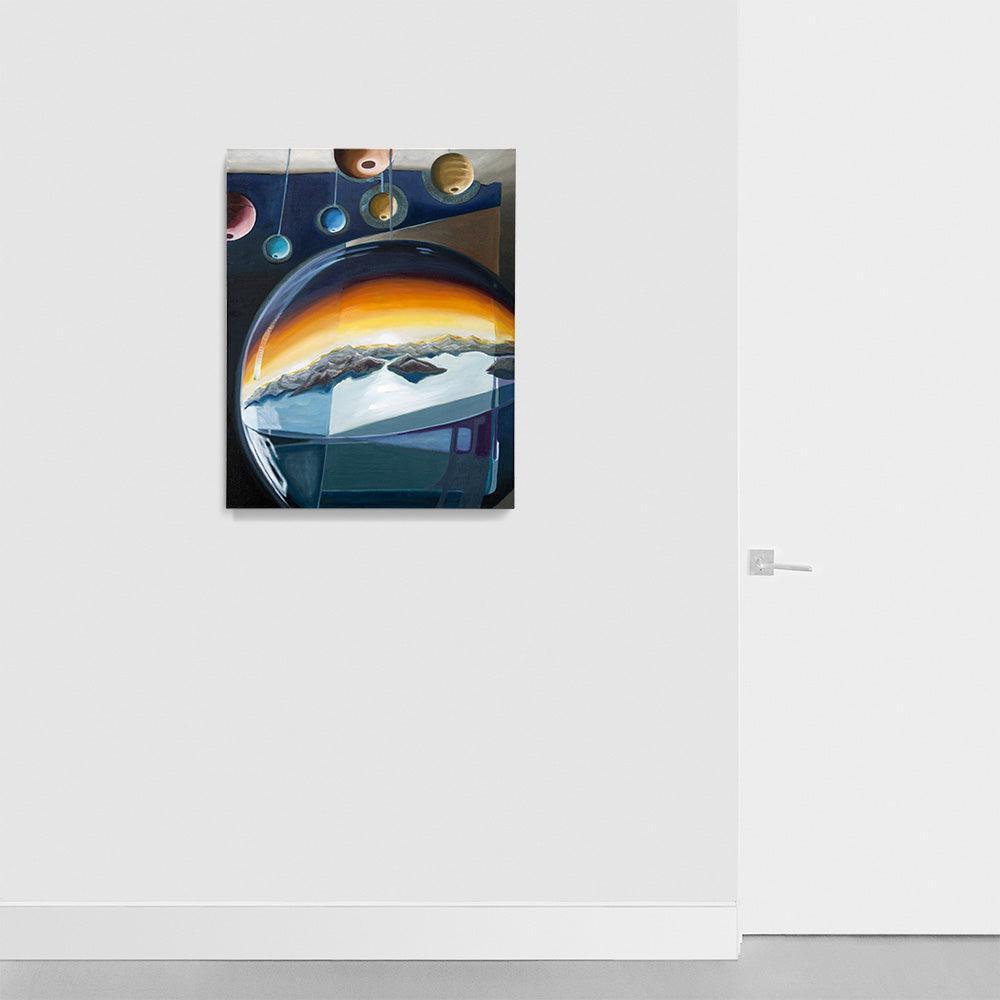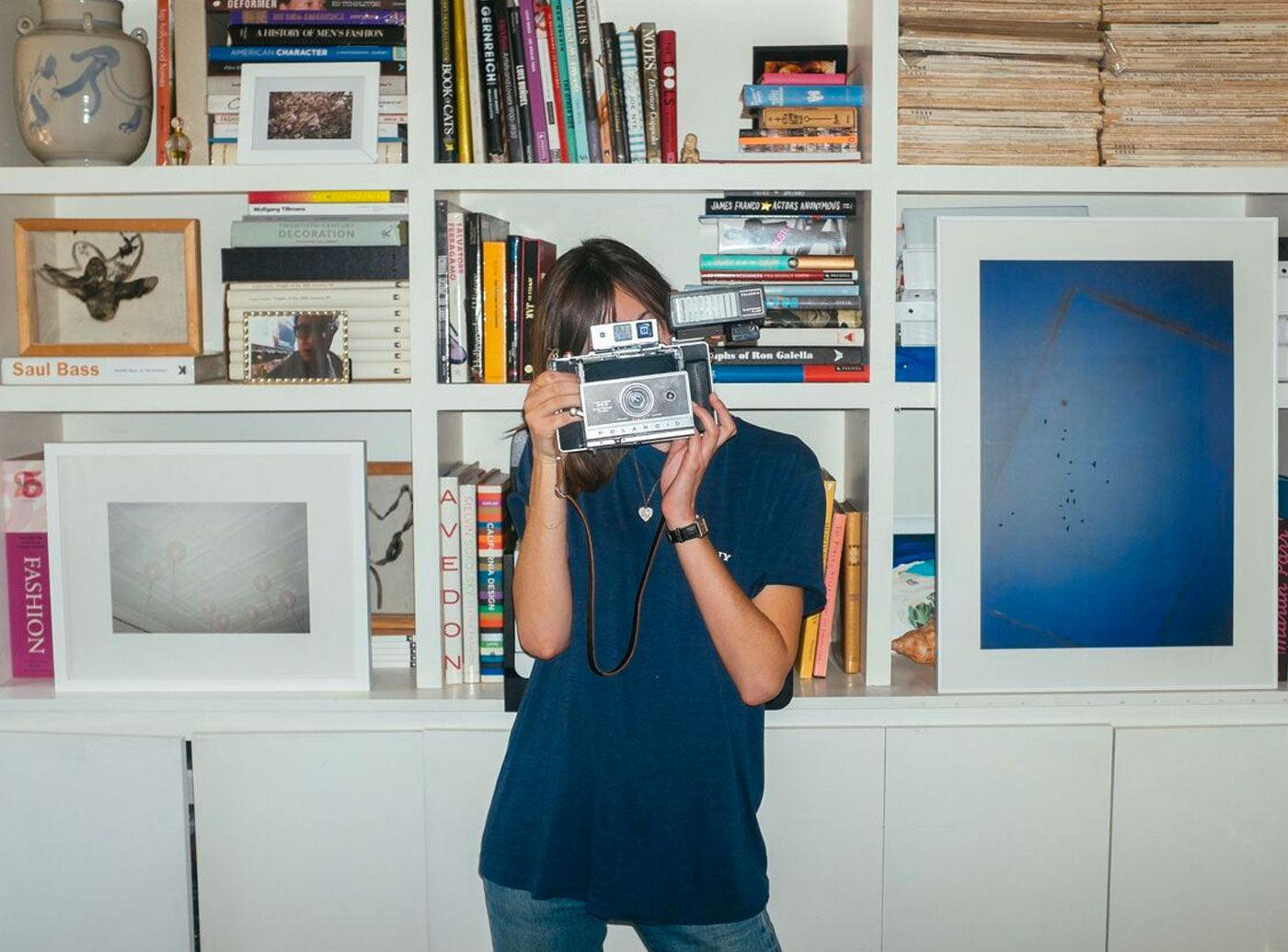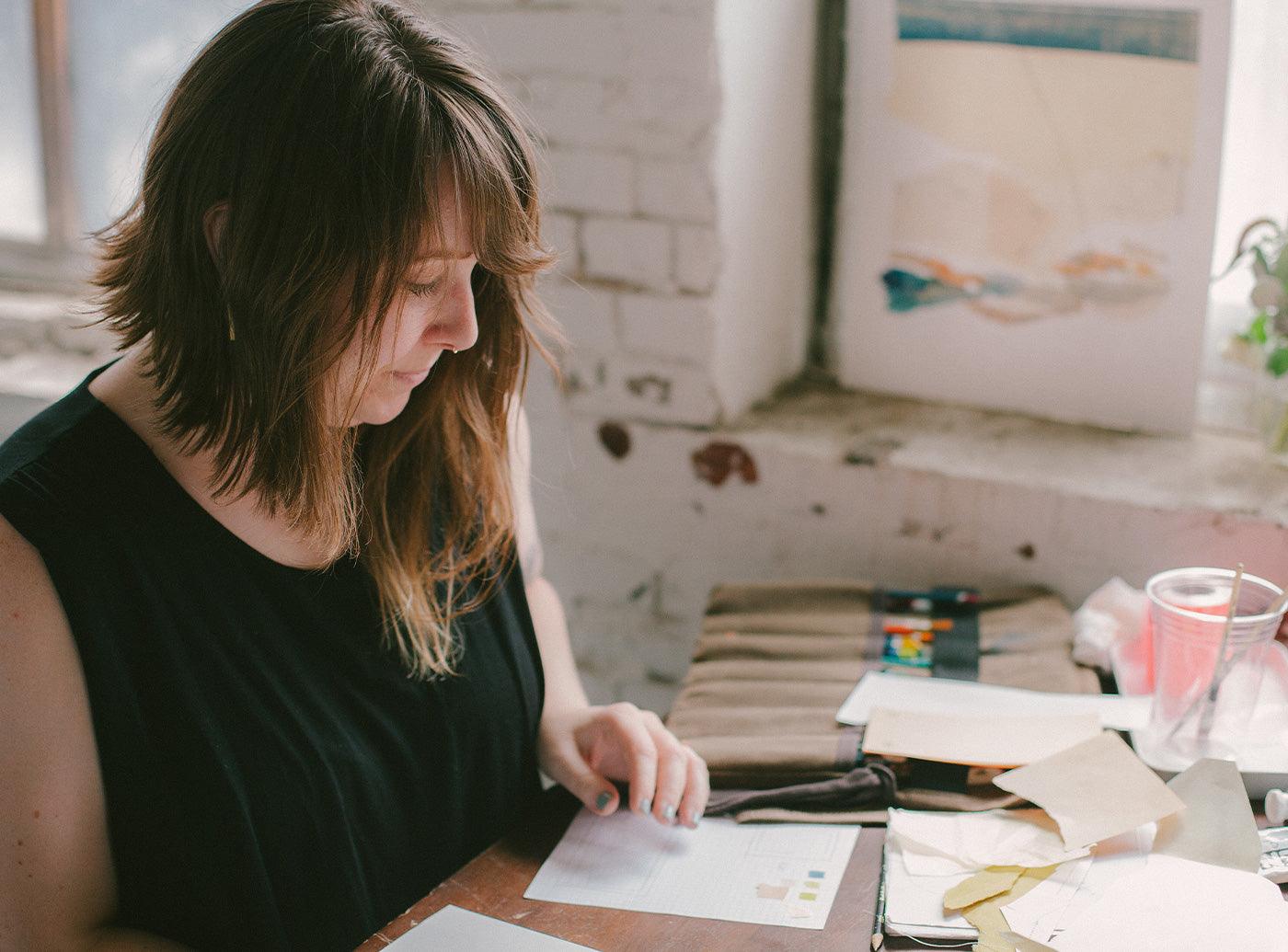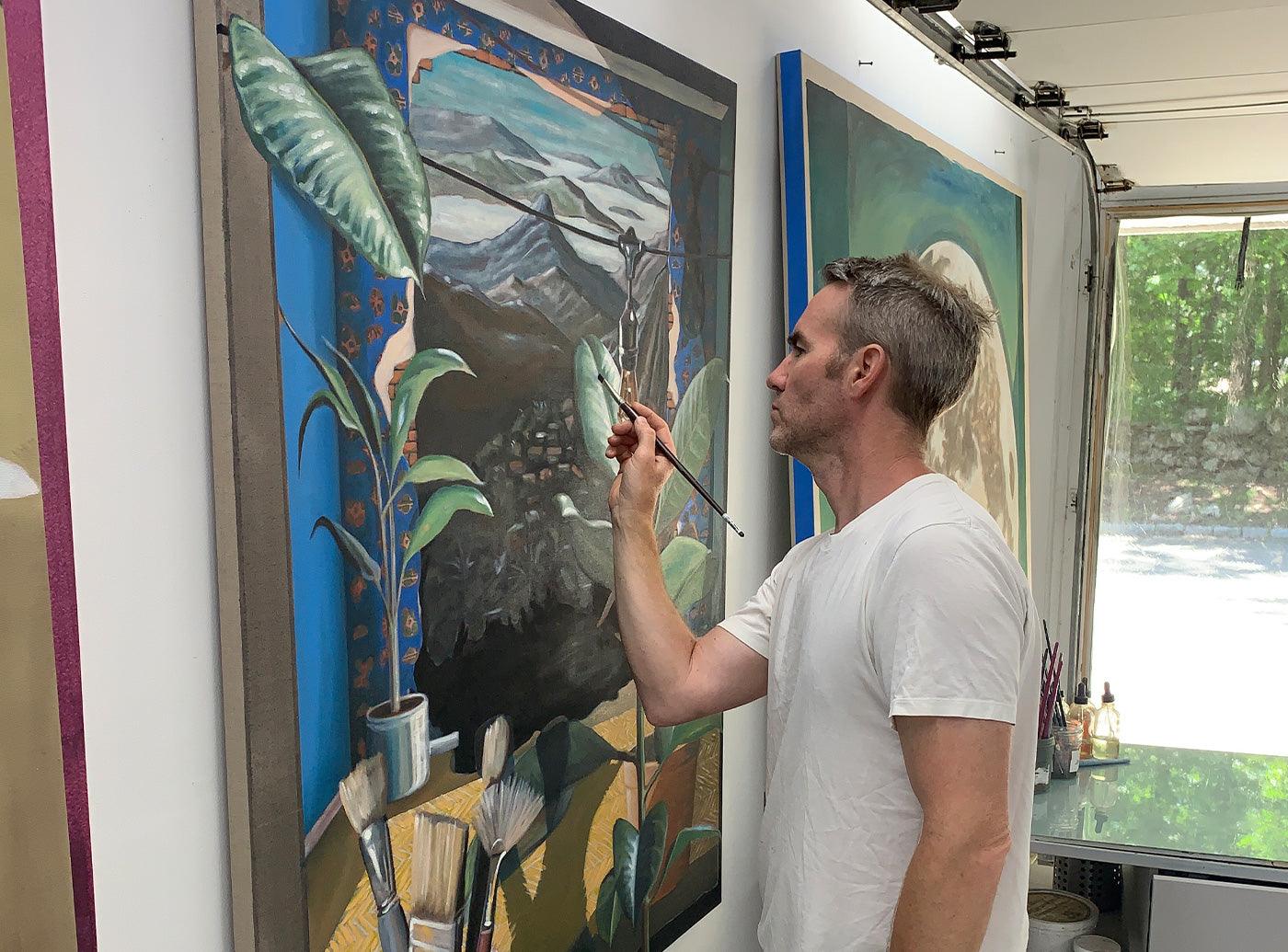
In the Studio | Mathew Tucker
Tappan is pleased to introduce Mathew Tucker, an artist who illustrates the artificial nature of landscape painting. What results is a surreal body of work that is both colorful in concept and design.
TAPPAN
Tell us about yourself and how you came to be an artist...
MATHEW TUCKER
I was born just north of London but moved to the United Arab Emirates when I was two years old. My father worked for a large telecommunications company, and we were always posted overseas. We were fortunate to live in several different countries and got to travel a lot. Museums were always top of the itinerary. I think those early experience shaped much of my interest in art. In my early twenties I studied Art and Design in London, but at that time it didn’t seem like a ‘realistic’ career so I ventured down different career paths over the years. Eventually, I realized the value of pursuing something I deemed worthwhile; I came back to art in my thirties and decided that it was my career. It was what I wanted to do, it was what I cared about, and how I wanted to spend my time.
TAPPAN
What is your creative process?
MATHEW TUCKER
My creative process has developed over time. I no longer start with a metaphorical blank canvas. I’ve identified certain themes, narratives or concepts that are important to me and they tend to recur in the work. I often write words or ideas that I want to convey on Post-it notes and have started making Post-it note sketches too. I think trusting the process is one of the main forces. I make decisions early on that create a set of constraints for me to work around. In my current work, the frame or border is a rule or device that I use as a starting point. I think this makes starting new work much easier, and it takes away some of the pressure. I definitely prioritize the intuitive over the intellectual, and I like the work to unfold through a process of push and pull rather than achieving a rigorous set of objectives. I like working with the structure of a series, too, because it’s interesting to see the multiple outcomes and choices that emerge out of the same set of rules or constraints. For each new series, I tend to make some adjustments like moving from canvas to wood or wood to burlap. Even a small shift in material can have a profound effect on the work and the choices that go into making it.
TAPPAN
What draws you to painting?
MATHEW TUCKER
The physical act of painting is itself part of the reward. Of course, the outcome is important, too, but it’s a balance between the finished piece and the evidence of the process. I’ve always been a maker and a fixer from building with lego blocks, to making model planes, radio controlled cars, and paper mache landscapes. Painting is just an extension of that early work. Even though we think of painting as a 2D medium, it’s very much a process of building and shaping. I think there is an inherent satisfaction in trying to bring an idea into the physical realm. I think of the painting process in very meditative terms, too. Even if theory and problem solving is analytical, about moving parts, once certain decisions are made, you kind of lose yourself in the execution, and I think the viewer does, too.
TAPPAN
Where do you draw inspiration from?
MATHEW TUCKER
Travel is a big part of my inspiration, and I think that encompasses architecture, landscape and history, too. Photography has absolutely shaped my practice. I love looking at photographs, and I love what they give us and how they shape what we see. My work is very much about place and my relationship to my surroundings. I frequently borrow elements from my home or my neighborhood. I think painting feeds painting. I think instagram is a massive part of the influx. I definitely seek a lot of inspiration from other painters this way.

Mathew Tucker says
“I LIKE THE IDEA OF ENTANGLING NATURE WITH A SENSE OF ESCAPISM, MEDITATION, SURREALISM AND THE SUBLIME.”



TAPPAN
When do you make your best work?
MATHEW TUCKER
There was a time when I used to make my best work between 10pm and 4 am but that is totally out of the question since my daughter came along. Now the magic hours for me are between 12.30 pm and 3 pm when she takes her naps. I think my best work comes with a sense of ease and intuition so I always try to get out of my own way as much as possible. I like setting little goals or rules to kind of trick myself into the bigger ones.
TAPPAN
What influence does modern culture have on your work?
MATHEW TUCKER
I think that our current ‘always-on, always connected’ culture can be exhausting, and it inspires that yearning to escape and to reconnect with nature and with landscapes. In many ways, I think that is what my current work is about. There aren’t any figures in the work and this is about my need for solitude and quiet; an uncluttered space.
TAPPAN
What is your relationship with social media?
MATHEW TUCKER
It’s a love hate one. I’ve managed to limit the amount of time so I don’t get sucked into the wormhole, but I think it can also be an amazing tool. Instagram is certainly the main one, for viewing and sharing work and for the community it creates. I think it is a really incredible platform for visual artists more than anything else. I also use youtube quite a lot as a great learning resource for talks, documentaries and instruction.
TAPPAN
What do you listen to when creating?
MATHEW TUCKER
Podcasts and music. I listen to a few art podcasts, The Conversation, Sound and Vision, Talk Art and The Thriving Artist Podcast. I like listening to Tim Ferris and hearing about how other people solve problems, deal with setbacks and work at stuff.
Music-wise I listen to a really broad mix, a lot of Sam Cook, Alton Ellis, Frank Sinatra, late 90s hip hop, Arctic Monkeys. Sometimes I get absorbed in what I’m doing, and I prefer to work in silence. I think the nature of the painting dictates my choice. If I really have to concentrate on something, I tend to avoid music or podcasts, but if it’s very preparatory, physical, expedient or gestural then music is often the perfect companion.
TAPPAN
Who are some contemporaries or figures in art history who have influenced you?
MATHEW TUCKER
Growing up, David Hockney was my favorite artist, and he continues to be a huge influence. I’ve always loved the approachable and sincere way that he talks about his work. The same is true of Peter Doig. I love his work too. William Blake and John Martin are old favorites.
I adore Nicole Eisenman’s paintings. Everything I love about painting is present in her work. It seems so effortless, but you just know that it took a genius to think of it. There are so many emerging artists, too, that massively influence my work. I think we’re so fortunate now through instagram that we get to see what people are doing in their studios, and how they are solving problems in their work.


TAPPAN
What influence does living in New York have on your work?
MATHEW TUCKER
I think that being surrounded by this vast human made environment has actually shaped my most recent work. I’ve had to create my own landscapes and meditative spaces. When I lived in rural Ireland, surrounded by ocean and mountains, I painted the city. Now that I live in the city, I paint the mountains and the great outdoors. I could undoubtedly make these paintings anywhere and have no need especially to be in New York, but I think the desire is to be here, surrounded by art and to be accessible to a community of other artists and art professionals. I think being connected to the major art hubs is still a big help in becoming more visible, but I don’t think the location dictates the aesthetic, the content, or the ideas as it once did.
TAPPAN
Are there any quotes or mantras that you particularly connect with?
MATHEW TUCKER
There are two that really stick in my mind from a studio context;
‘Inspiration is for amateurs. The rest of us just show up and get to work. If you wait around for the clouds to part and a bolt of lightning to strike you in the brain, you are not going to make an awful lot of work. All the best ideas come out of the process; they come out of the work itself.’
Chuck Close
‘When you're in the studio painting, there are a lot of people in there with you - your teachers, friends, painters from history, critics... and one by one if you're really painting, they walk out. And if you're really painting, YOU walk out.’
Philip Guston
TAPPAN
What messages or emotions do you hope to convey to your audience?
MATHEW TUCKER
I hope that people get a few things from the work. I welcome complexity and always enjoy work that can have several reads and leaves room for doubt and ambiguity. I hope that our relationship to nature and the outdoors is conveyed, and I like the idea of entangling nature with a sense of escapism, meditation, surrealism and the sublime.
TAPPAN
What makes you laugh?
MATHEW TUCKER
My 17 month old daughter, constantly and my wife very often too!!
TAPPAN
What makes you nervous?
MATHEW TUCKER
Also my 17 month old daughter especially in the playground!
Screwing up a painting too, but I’ve learnt not to be so precious and to just keep on making.
TAPPAN
What makes you excited about the future?
MATHEW TUCKER
Also my 17 month old daughter especially in the playground!
New ideas and getting more studio time!
I always have a sense of excitement and anticipation about whatever I’m going to make next. I’d like to work towards a solo show. I love having a deadline or a goal to focus on.



